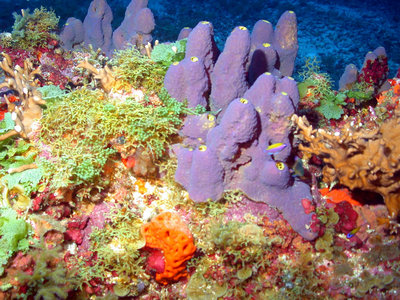Now that you have explored a basic introduction to phylogeography you should be able to identify living things around you and have a rough idea of how they came to be there. Learning the scientific name and taking a quick glance around the physical habitat and the geological history of the location should be all you need to start you off on another adventure in biodiversity. Remember, phylogeography is a multidisciplinary field of study, so draw from all areas of knowledge if you wish to explain and understand any part of its application.


Pseudoceratina crassa, Gulf of Mexico, McGrail Bank. Image courtesy NOAA
Information on the Internet
- A Paleoceanographic Summary A history of the geological epochs, with a focus on ocean formation
- Important events in the history of life An interactive timeline illustrating important events in history
- Gondwana Greening (pdf) Illustrated, comprehensive overview of major epochs, phylogeography, biodiversity and interesting bits of information
- Chameleon Biogeography Takes an Ocean Cruise An alternative viewpoint for the origin of chameleons is presented
- A Truly Bizarre Lizard Brief description and fossil evidence for chameleons
- Chameleon News Updated regularly, this online magazine features articles on all things chameleon
- What makes a petal a petal? An introduction to flower petals and an informative source for information on their evolutionary adaptations
- Nova: Mother of Gardens Click on the hyperlink 'launch interactive' and learn about a selection of common flowers that originated in China
- In Search of the First Flower A scientific article illustrating what may be considered one of the very first flowering plants discovered to date
- The Life of Birds: Evolution A very comprehensive look at the history and evolution of birds.
- Coral Reefs of the Indo-Pacific Here you will find a selection of literature on coral reefs and their geographical distribution as well as phylogeographical considerations.
- History of Biogeography A vivid description of biogeography and its history

 Go to quick links
Go to quick search
Go to navigation for this section of the ToL site
Go to detailed links for the ToL site
Go to quick links
Go to quick search
Go to navigation for this section of the ToL site
Go to detailed links for the ToL site